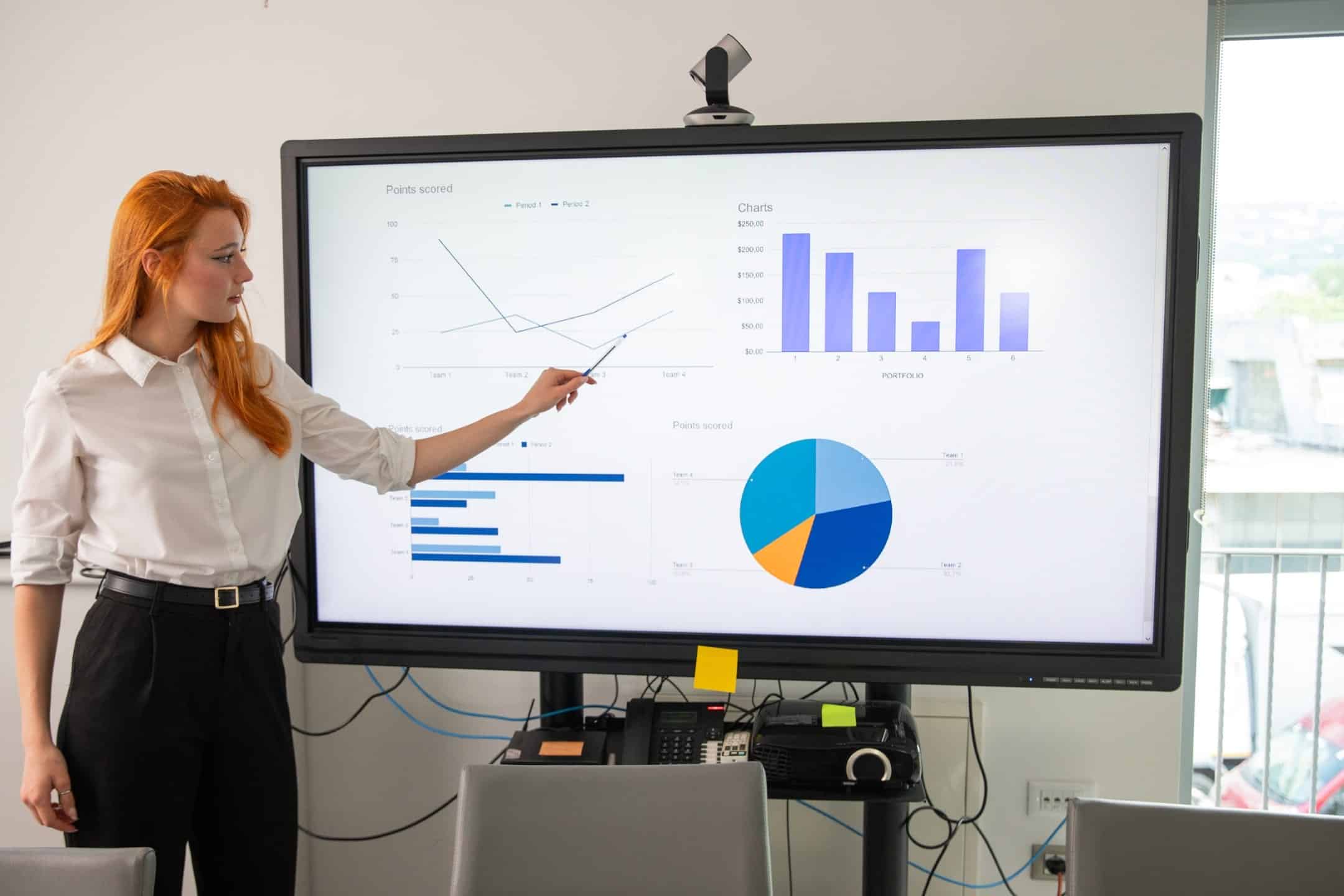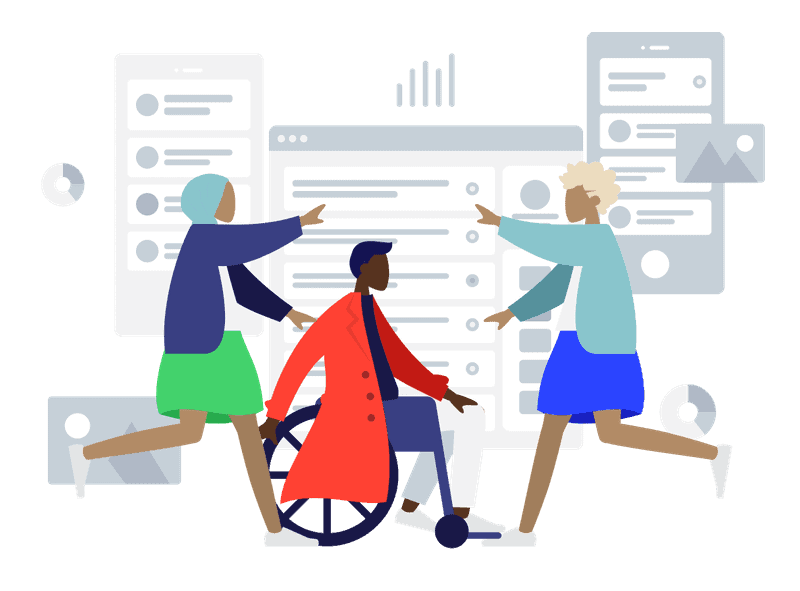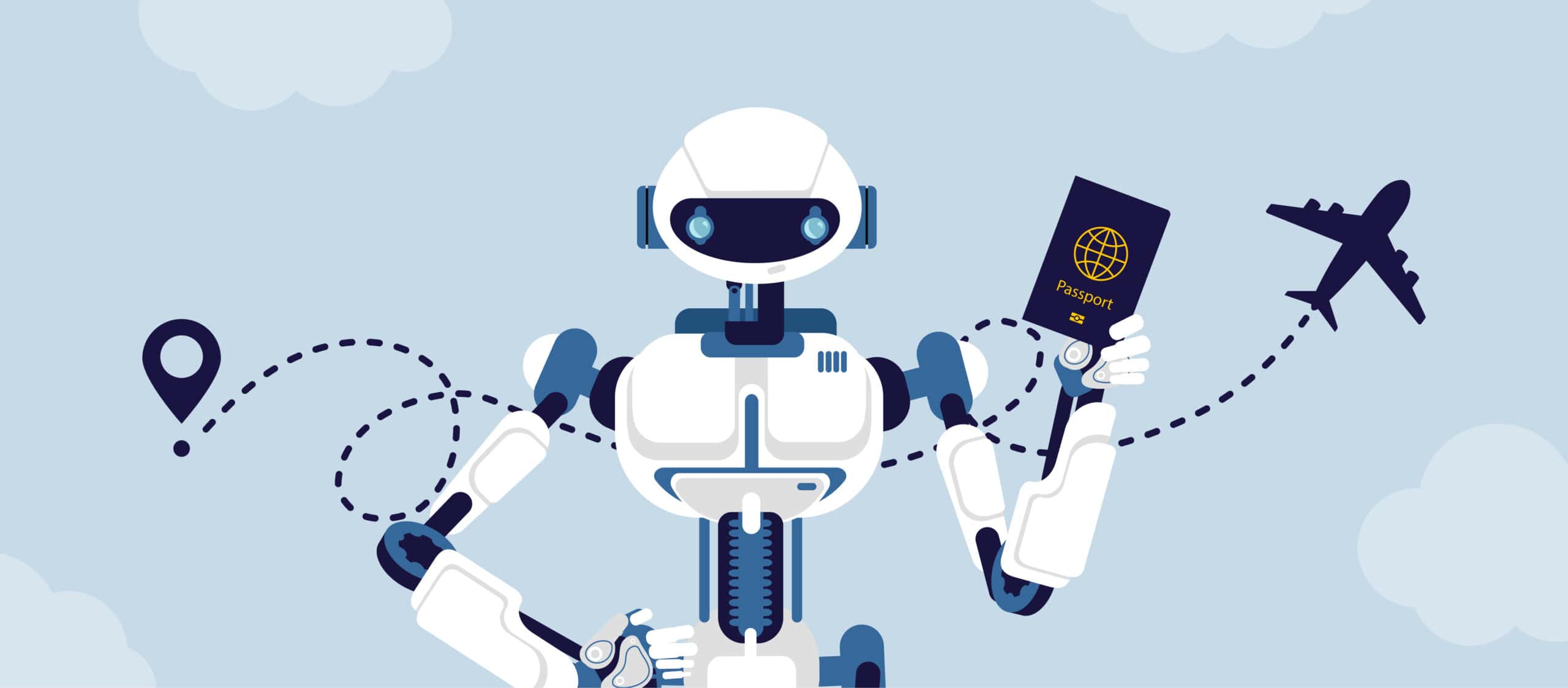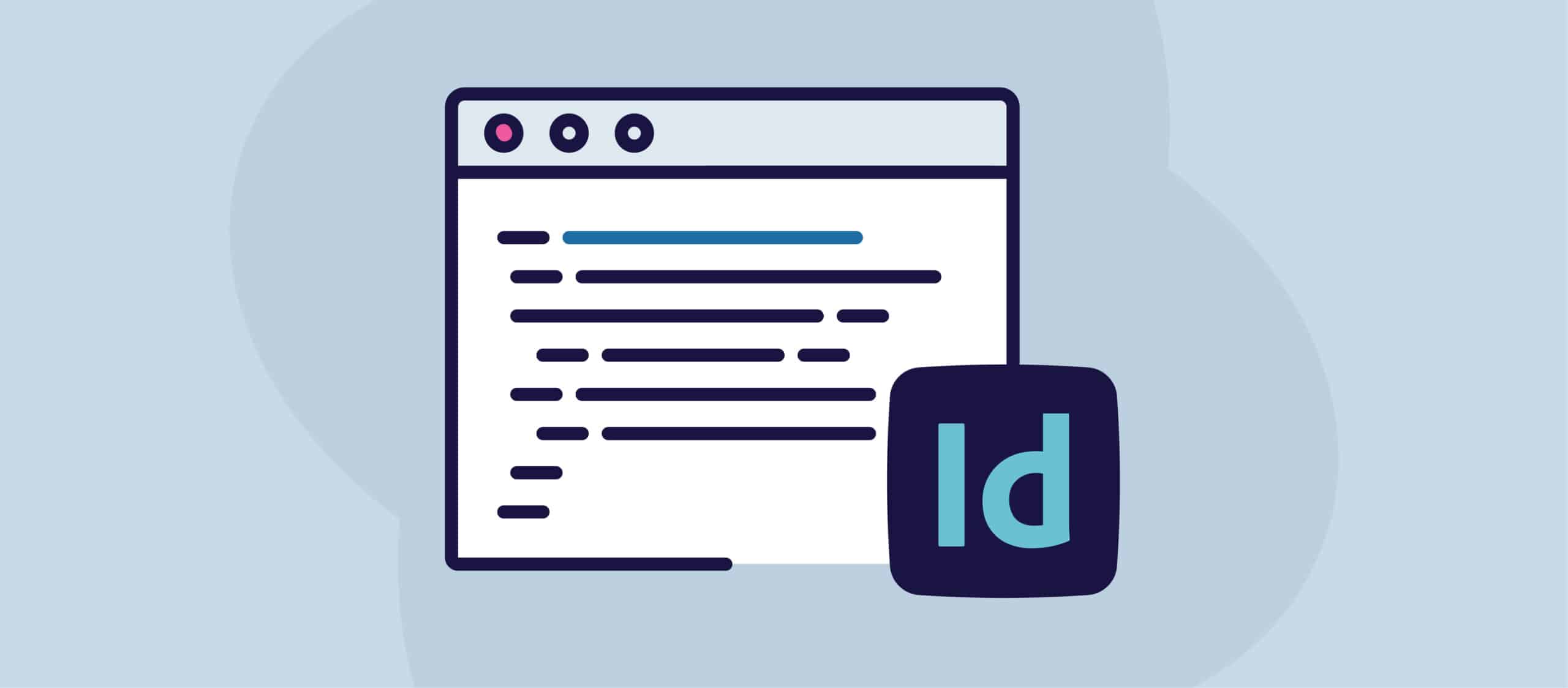Introduktion
Digital tilgængelighed has become a critical global issue as more of our daily lives, from work and education to socialization and entertainment, take place online. With an estimated 1 billion people worldwide living with some form of disability, ensuring that digital platforms, websites, apps, and content are accessible to everyone is not only a legal and ethical responsibility but also a moral one. As awareness grows about the importance of creating inclusive digital environments, governments, and corporations around the world are taking steps to promote and enforce digital accessibility.
The aim of this article is to explore the global efforts being made to raise digital accessibility awareness, looking at initiatives from international organizations, regional governments, and private companies, as well as global campaigns that seek to create a more inclusive digital world for all.
Global Organizations Promoting Digital Accessibility
The World Wide Web Consortium (W3C)
One of the most influential bodies in promoting digital accessibility is the World Wide Web-konsortiet (W3C). Through its development of the Retningslinjer for tilgængelighed af webindhold (WCAG), W3C has set the global standard for ensuring web accessibility. The WCAG, which provides a comprehensive framework for making web content more accessible to individuals with disabilities, serves as a foundational resource for many accessibility laws and initiatives across the globe.
W3C is committed to promoting digital accessibility awareness not only through the creation of technical standards but also through extensive global outreach efforts. It offers a wide range of educational resources, including online tutorials, training sessions, and webinars, all aimed at increasing understanding of web accessibility best practices. Furthermore, W3C’s Accessibility Guidelines Working Group brings together experts from around the world to refine and expand the WCAG-standarder in response to evolving digital landscapes, ensuring that accessibility remains a priority.
The United Nations (UN)
The United Nations (UN) has also been a significant driver in the global conversation about digital accessibility. Through its Convention on the Rights of Persons with Disabilities (CRPD), the UN advocates for the rights of people with disabilities, including their right to access ICT. Article 9 of the CRPD explicitly calls for the elimination of barriers to ICT, supporting initiatives aimed at making the digital world accessible to everyone, regardless of ability.
Global events hosted by the UN, such as the International Day of Persons with Disabilities, provide valuable platforms for raising awareness about digital accessibility issues. These events encourage governments, businesses, and civil society to take action toward creating inclusive digital environments, further embedding digital accessibility into the broader human rights discourse.
International Association of Accessibility Professionals (IAAP)
The International Association of Accessibility Professionals (IAAP) is another key organization that works to promote digital accessibility awareness on a global scale. IAAP offers certification programs that help entities build their capacity to implement accessible digital practices. By providing educational resources, training, and professional development opportunities, IAAP is fostering a global community of accessibility experts dedicated to ensuring that digital content is inclusive.
In addition to training and certification, IAAP hosts global conferences and events where accessibility professionals can share best practices, learn about the latest developments in accessibility standards, and network with other like-minded individuals committed to the cause of digital inclusion.
OZeWAI – The Australian Web Accessibility Initiative
OZeWAI, Australia’s leading association for digital accessibility, is dedicated to creating inclusive digital environments where people with disabilities can participate fully and with dignity. As a not-for-profit organisation, OZeWAI supports entities in designing accessible information, services, and policies. Through professional networking, education, and advocacy, OZeWAI advances knowledge and capacity in digital accessibility across Australia and the Asia Pacific region.
Founded on the belief that digital accessibility is a human right, OZeWAI advocates for removing barriers that exclude or hinder individuals with disabilities. Its vision is that Australians with disabilities enjoy equal access to the digital economy in alignment with their human rights and Australian law. By championing inclusive design, OZeWAI plays a vital role in the global mission to make digital access universal.

Regional Efforts to Promote Accessibility
North America
In North America, both the United States and Canada have taken significant strides in promoting digital accessibility awareness. In the U.S., the Americans with Disabilities Act (ADA) plays a crucial role in ensuring that people with disabilities have equal access to education, employment, goods, and services in all environments. While, historically, the ADA did not explicitly mention web accessibility, in April of this year Title II of the ADA, which applies to all public entities, was updated to include specific digital accessibility requirements in alignment with WCAG 2.1 at the AA level. This legal call to action from the Department of Justice comes with a mandated timeline for compliance and represents the country’s dedication to digital equity.
Organizations such as the ADA National Network provide valuable resources and training to help businesses and public institutions understand their obligations under the ADA. Furthermore, conferences like the M-Enabling Summit serve as a global forum for discussing how to harness mobile technology to enhance accessibility.
In Canada, the Lov om tilgængelighed for personer med handicap i Ontario (AODA) mandates that public and private corporations make their websites and digital services accessible to people with disabilities. This legislation has raised the bar for digital accessibility across the country and serves as a model for other regions. Both the ADA and AODA are key drivers in increasing digital accessibility awareness and setting the stage for more inclusive digital environments.
Europe
Europe has also made significant progress in promoting digital accessibility, largely through the European Accessibility Act (EAA). The EAA, adopted in 2019, sets requirements for making key products and services, including websites and mobile applications, accessible to people with disabilities. The EAA aligns with the WCAG guidelines and covers a wide range of industries, including banking, telecommunications, and e-commerce, pushing businesses across the European Union to prioritize accessibility in their digital strategies.
Organizations such as the European Disability Forum (EDF) are at the forefront of advocacy efforts, working to ensure that the EAA is effectively implemented across the EU. The EDF also promotes digital accessibility awareness through campaigns and events aimed at educating businesses, policymakers, and the general public about the importance of digital inclusion.
Asia and Pacific
In the Asia-Pacific region, countries like Japan and Australia are leading the way in promoting digital accessibility. Japan’s Act on Elimination of Discrimination against Persons with Disabilities explicitly addresses digital accessibility and requires public institutions to ensure that their websites are accessible to people with disabilities. This law has been instrumental in raising awareness about the importance of creating accessible digital platforms in Japan.
Australia’s Disability Discrimination Act (DDA) has also played a key role in promoting digital accessibility. The DDA mandates that websites and digital services be accessible to individuals with disabilities, and the Australian Human Rights Commission has issued guidelines based on WCAG to help businesses and public institutions comply with the law. Additionally, regional initiatives such as the Asia-Pacific Accessible ICT Forum promote collaboration and knowledge-sharing across countries, helping to raise digital accessibility awareness across the region.
Corporate and Technological Contributions
Tech Giants Leading the Way
Technology companies like Google, Microsoft, and Apple are leading the charge in promoting digital accessibility through innovative solutions and awareness campaigns. These companies have integrated a wide array of accessibility features into their products, making them more inclusive for people with disabilities. For example, Google’s Android operating system includes Skærmlæsere, customizable display settings, and voice recognition features, while Microsoft has pioneered accessibility tools like Eye Control, which allows users to navigate their devices using only their eyes.
In addition to creating accessible products, these tech giants are actively working to raise digital accessibility awareness through campaigns such as Microsoft’s Accessibility in Action initiative. These campaigns aim to educate both businesses and consumers about the importance of digital inclusion, helping to build a culture of accessibility across the tech industry.
Corporate Social Responsibility (CSR)
Many organizations are also incorporating digital accessibility into their Corporate Social Responsibility (CSR) strategies. By doing so, they are not only ensuring that their digital services are inclusive but also helping to raise awareness about the importance of accessibility across society. Companies such as IBM and Salesforce have made digital accessibility a central part of their CSR efforts, creating inclusive products while also advocating for broader changes in the way businesses approach digital design and development.
Through these CSR initiatives, companies are helping to shape a more inclusive digital landscape and are using their influence to raise awareness about the need for greater accessibility in both the public and private sectors.
Global Campaigns and Initiatives
Global Accessibility Awareness Day (GAAD)
One of the most impactful global initiatives promoting digital accessibility awareness is Global Accessibility Awareness Day (GAAD), which takes place annually on the third Thursday of May. GAAD was founded in 2012 to encourage the global community to engage in conversations about the importance of digital accessibility. The day is marked by a wide range of events, including webinars, training sessions, and accessibility audits, all aimed at raising awareness and promoting action on digital inclusion.
The global participation in GAAD is significant, with businesses, educational institutions, and advocacy organizations from around the world taking part. Through these events, GAAD has become a powerful platform for spreading the message of digital accessibility and encouraging individuals and organizations to prioritize inclusive design in their digital projects.
Other Awareness Campaigns
In addition to GAAD, other campaigns such as #A11y (a numeronym for “accessibility”) are helping to raise awareness about digital accessibility through social media. The #A11y hashtag is widely used by accessibility advocates and professionals to share resources, discuss best practices, and promote events related to digital accessibility.
On a regional level, many countries are launching their own campaigns to promote accessibility awareness. For example, in the UK, the “Purple Tuesday” initiative aims to improve the customer experience for disabled people, both online and in-store, by encouraging businesses to enhance their accessibility efforts.

Challenges and Opportunities in Promoting Digital Accessibility Awareness
Barriers to Awareness
Despite the progress being made, there are still significant challenges to promoting digital accessibility awareness. One of the primary barriers is a lack of education and understanding about the importance of accessibility. Many businesses and developers are unaware of the tools and techniques available for creating accessible content, which can result in the unintentional exclusion of users with disabilities. Furthermore, in some regions, there is a lack of legal enforcement of accessibility standards, which can hinder progress.
Opportunities for Growth
However, there are also numerous opportunities for growth in promoting digital accessibility awareness. Emerging technologies such as kunstig intelligens (AI) og maskinlæring are offering new ways to create more accessible digital environments. For example, AI-powered tools can automatically generate Alternativ tekst for images or provide real-time transcription of audio content, making digital content more accessible to people with disabilities.
Increased international collaboration and continued education efforts are also essential for furthering the cause of digital accessibility. By working together across borders and industries, stakeholders can share knowledge, resources, and best practices to create a more inclusive digital world.
Konklusion
The global efforts to promote digital accessibility awareness are vast and varied, spanning international organizations, regional governments, and private corporations. While significant progress has been made, there is still much work to be done. For more information, kontakt os I dag!



